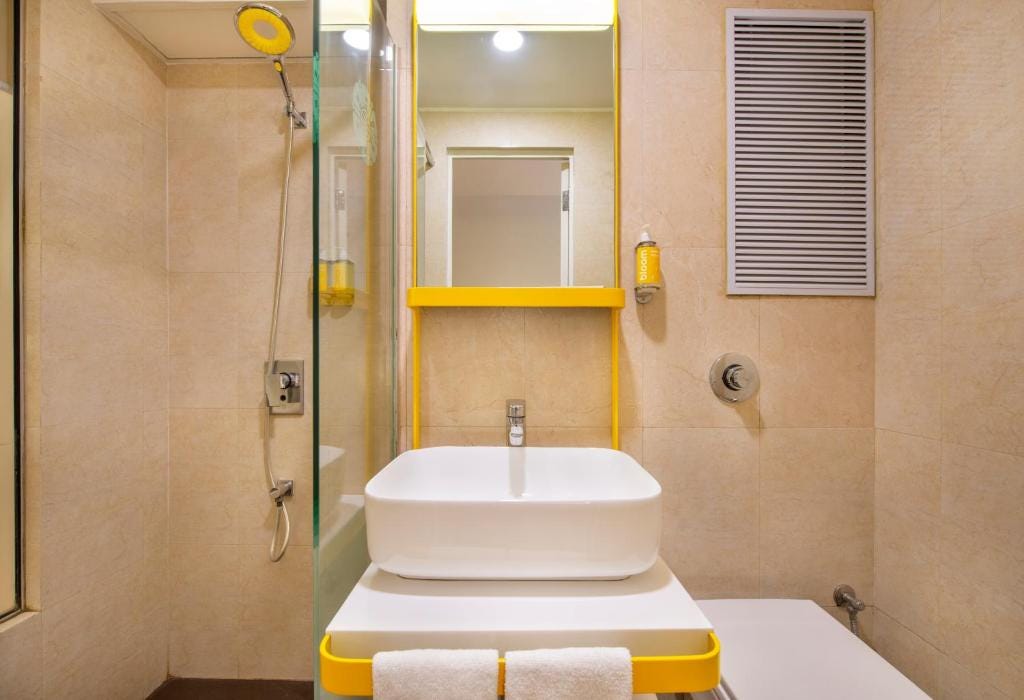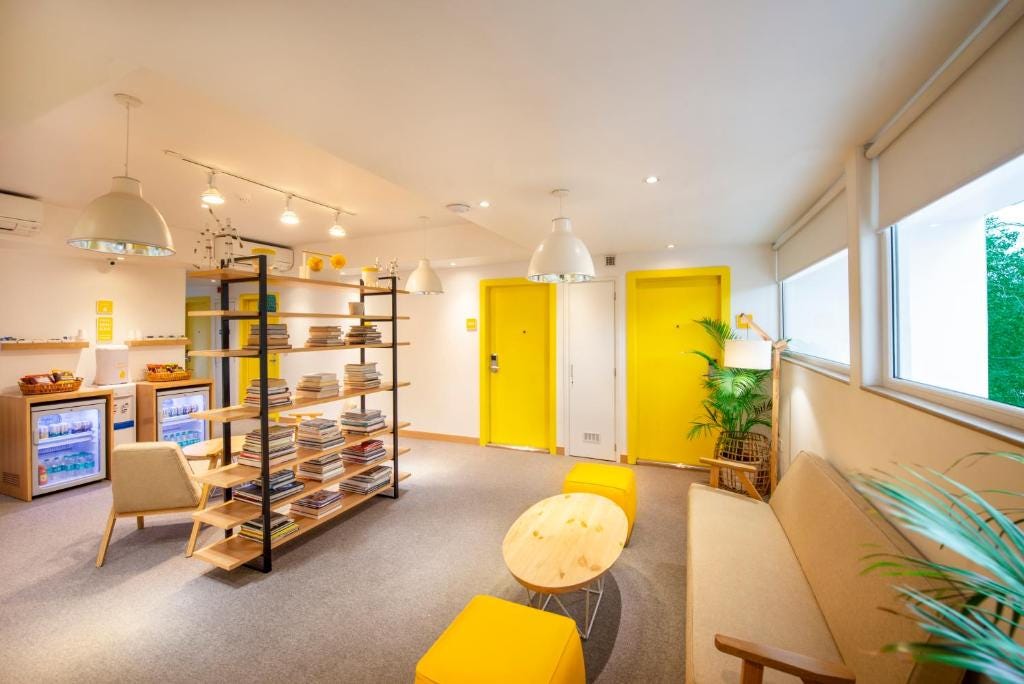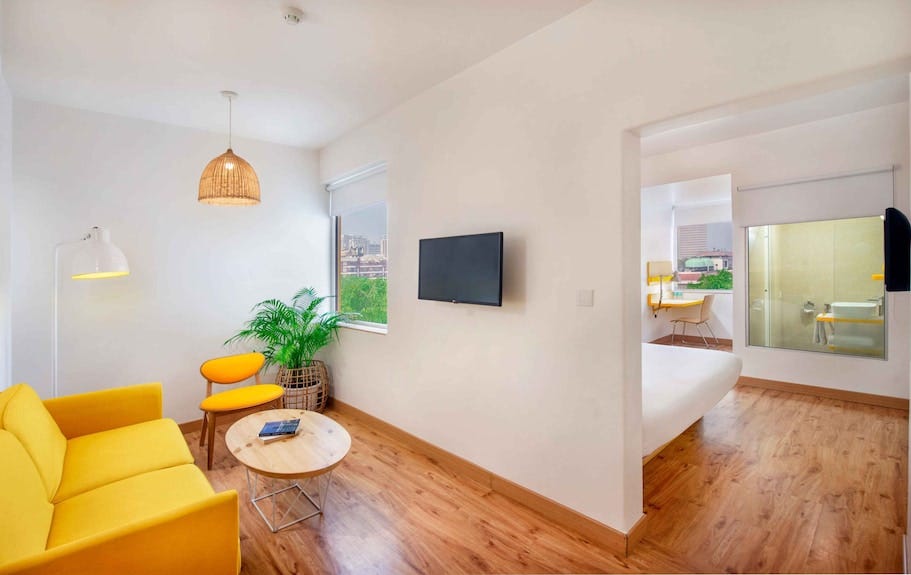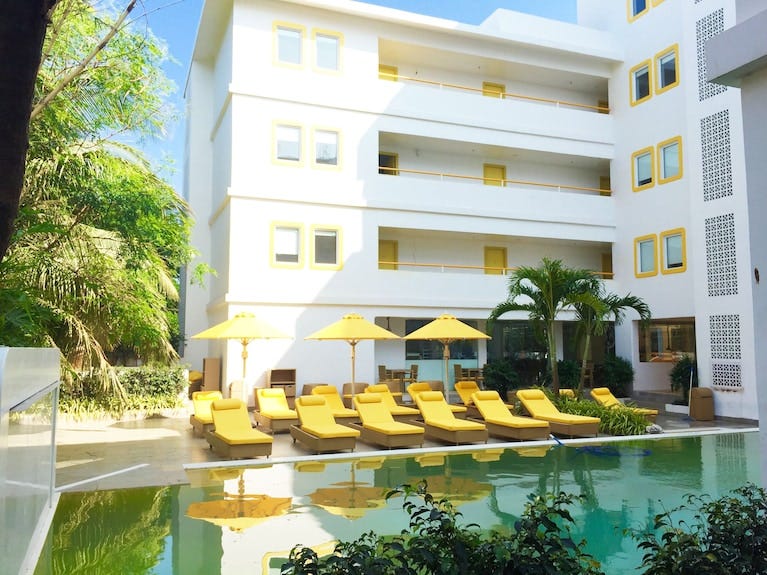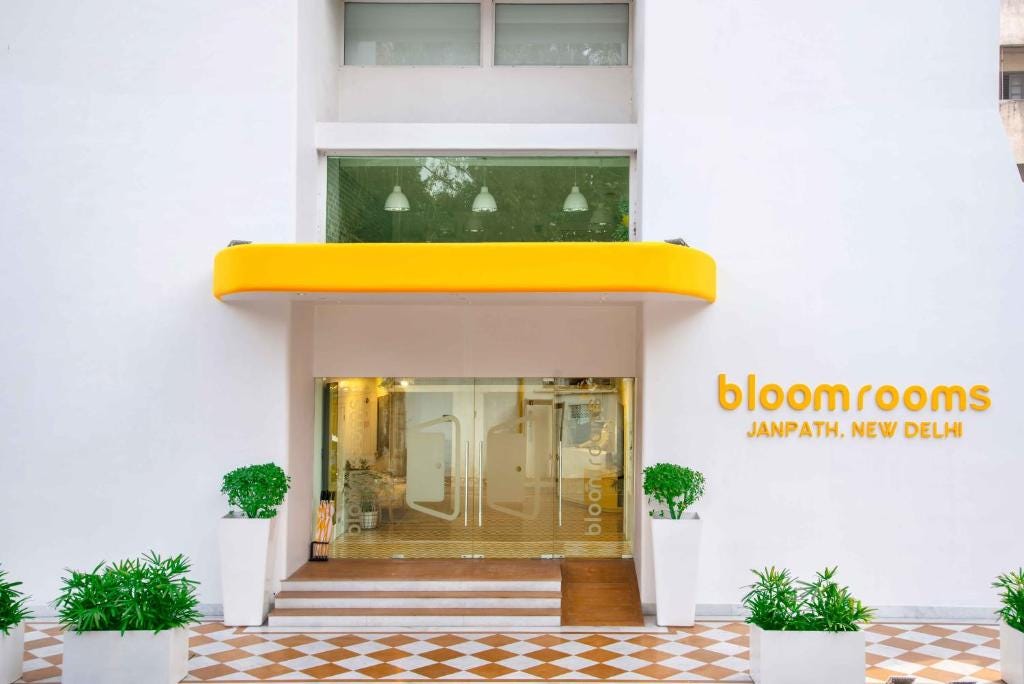The Rise of Bloomrooms: Tech, Brand, and Profitability
Playbook of how this hospitality company cracked the code to affordable luxury
A few weeks ago, I stayed at Bloomrooms @ Janpath, New Delhi with my family.
With a last-minute booking based on a 4.5+ tripadvisor rating, I expecting a nice, modern , comfortable and central place to crash after long days of exploring - nothing fancy or luxury.
But within minutes of stepping inside, I realized this place had something very special!
It was different.
The fragrance that greeted us at the entrance— was a blend of fresh citrus, white tea —clean, uplifting, and luxurious, similar to global luxury chains like Westin (white tea and aloe) and The Ritz-Carlton (signature cedar and citrus blends).
The bright yellow and white branding, simple yet striking.
The community-like vibe—a mix of travellers, business folks, and digital nomads working on their laptops in the common area. Cookies, beverages and other freebies in the passage ways
The tech-enabled room experience—check-in via app, room service at the tap of a button, and keyless entry that actually worked.
The thoughtful little touches—a doodle-style city map highlighting must-see places with estimated travel times, so you could plan your day in seconds.
And then there was the location—6 minutes from Connaught Place, India Gate, Jantar Mantar, and Gurudwara Bangla Sahib. Every key landmark was just around the corner.
By the time I checked out, my mind wasn’t just thinking about the hotel experience. It was thinking business.
I knew I had to dig deeper into the numbers behind Bloomrooms.
The Growth Story: From ₹49 Cr to ₹250 Cr in 3 Years 📈
Bloomrooms isn’t just a cool brand with great interiors. It’s a hyper-efficient, asset-light, tech-driven business that’s scaling fast.
Here’s how the numbers stack up:
FY22 Revenue: ₹49 Cr
FY23 Revenue: ₹144 Cr (3x growth in one year)
FY24 Revenue: ₹250 Cr (+73.6% YoY growth)
FY24 Profit: ₹14 Cr (2.3x increase from FY23)
That’s not just growth. That’s momentum.
Bloomrooms has gone from a niche player to a fast-scaling mid-market disruptor in India’s hotel industry. And this is just the beginning.
Here’s Why I think Bloomrooms is Poised for Massive Success 🚀
1. The Asset-Light Model: Scaling Without Owning
Bloomrooms doesn’t own most of its properties. Instead, it leases, franchises, or manages hotels under its brand.
This means:
Less capital investment
Faster expansion
Higher profitability per hotel
It’s the same playbook that helped Marriott and OYO scale globally—grow without the baggage of real estate ownership.
Right now, Bloomrooms operates 50+ hotels across India and is on track to hit 100+ locations in the next 2-3 years. And unlike many hospitality startups that burn cash, they’re laser-focused on profitable growth.
2. Premium Budget Positioning = Higher Margins
Unlike OYO or FabHotels, which target the absolute low-cost segment, Bloomrooms sits in the premium budget category—the sweet spot between affordability and comfort.
Their target audience?
Business travelers who want efficiency without luxury pricing.
Digital nomads and young professionals.
Family travelers looking for clean, centrally-located hotels.
This positioning allows them to charge higher-than-budget rates ( ₹4,000 - ₹ 9000 per night) while maintaining lean operations. That’s a recipe for high margin expansion.
3. Tech-Driven Efficiency = Lower Costs, Better Experience
One of the things that impressed me most at Bloomrooms @ Janpath was how seamless the experience felt.
Mobile check-in & check-out—No front desk hassle.
App-based room service & support—Ordered extra towels in seconds.
Keyless entry—No misplaced card drama.
Automated room pricing—AI-driven dynamic rates, like airlines.
I did not have to call room service for anything , just an app chat was getting things done, I see how GenZ and Gen Alpha would totally love this
All of this means lower operational costs, faster turnaround, and higher guest satisfaction.
4. "Bloomverse" Branding: Every Detail Counts
Everything at Bloomrooms is branded to perfection. The bright yellow theme runs through the entire stay experience:
Yellow accents in the shower, lamp shades, and furniture.
A local city map in yellow that highlights must-see spots and distances.
Even the key card and toiletries stay true to the brand aesthetic.
It’s not just a stay; it’s an experience. Welcome to the Bloomverse.
5. Common Spaces = A Hostel-Like Community Feel
Unlike traditional hotels that keep people locked in their rooms, Bloom encourages interaction.
Lounge spaces with coffee, workstations, and books.
Free tea and coffee in common areas.
A casual, open seating vibe that feels like a premium hostel.
This hybrid model—a mix of business hotel + premium hostel vibes—is perfect for modern travelers who want both privacy and social engagement.
6. Location, Location, Location!
The biggest advantage? You save time.
At ₹9,000 per night, we got a suite room in the heart of Janpath—two separate rooms, pod-style interiors, and all the amenities of a 4-star hotel inside the room. And the location? Absolutely unbeatable:
Connaught Place - 5 mins
India Gate - 6 mins
Red Fort - 20 mins
Rashtrapati Bhavan - 6 mins
Jantar Mantar - 5 mins
Supreme Court - 8 mins
Lok Sabha - 7 mins
Khan Market - 12 mins
Being this central meant we could do so much more in less time. All other options in this area were at least ₹17,000++ for a family of 3.
7. Direct Booking Strategy = Higher Profits
Most hotels rely on OTAs like Booking.com and MakeMyTrip, which take a 15-25% cut. Bloom is aggressively driving direct bookings via its website and app, reducing dependency on third-party platforms.
Direct bookings = higher margins + better customer retention.
8. Localized Experiences in Iconic Cities
The other thing I found, as I dug deeper is that Bloomrooms is not just about uniformity—it’s about bringing local character into the guest experience while maintaining its signature service. The brand has expanded to multiple cities, each offering a unique stay:
Mumbai (Worli, Juhu, Andheri) – Business-focused properties in the heart of the city.
Udaipur (The Bloom Kothi) – A beautifully restored heritage-style property that blends modern amenities with the charm of a local haveli.
Goa (Candolim, Calangute) – A boutique coastal experience infused with laid-back beach vibes.
Bangalore (Indiranagar, Brookefield) – Perfect for business and leisure travelers alike.
Pune (Koregaon Park) – A mix of work and nightlife
By localizing the experience—like the kothi-style stay in Udaipur—Bloomrooms ensures that guests don’t just visit a city; they experience it authentically while enjoying the reliability of a branded stay.
The Big Picture: What’s Next for Bloom Hotels?
Bloom Hotels is already profitable and is now looking to raise ₹400 Cr to fuel expansion.
If they execute well, Bloom Hotels could be the next big hospitality success story in India.
They’ve already grown 5x in three years. And I’d bet they’re just getting started.
And personally for me, couldn’t help but keep hum this all through the stay :)
Look at the stars
Look how they shine for you
And everything you do
Yeah, they were all yellow
I’d stay again in a heartbeat. No second thoughts, just a blink, and I’m booking!





